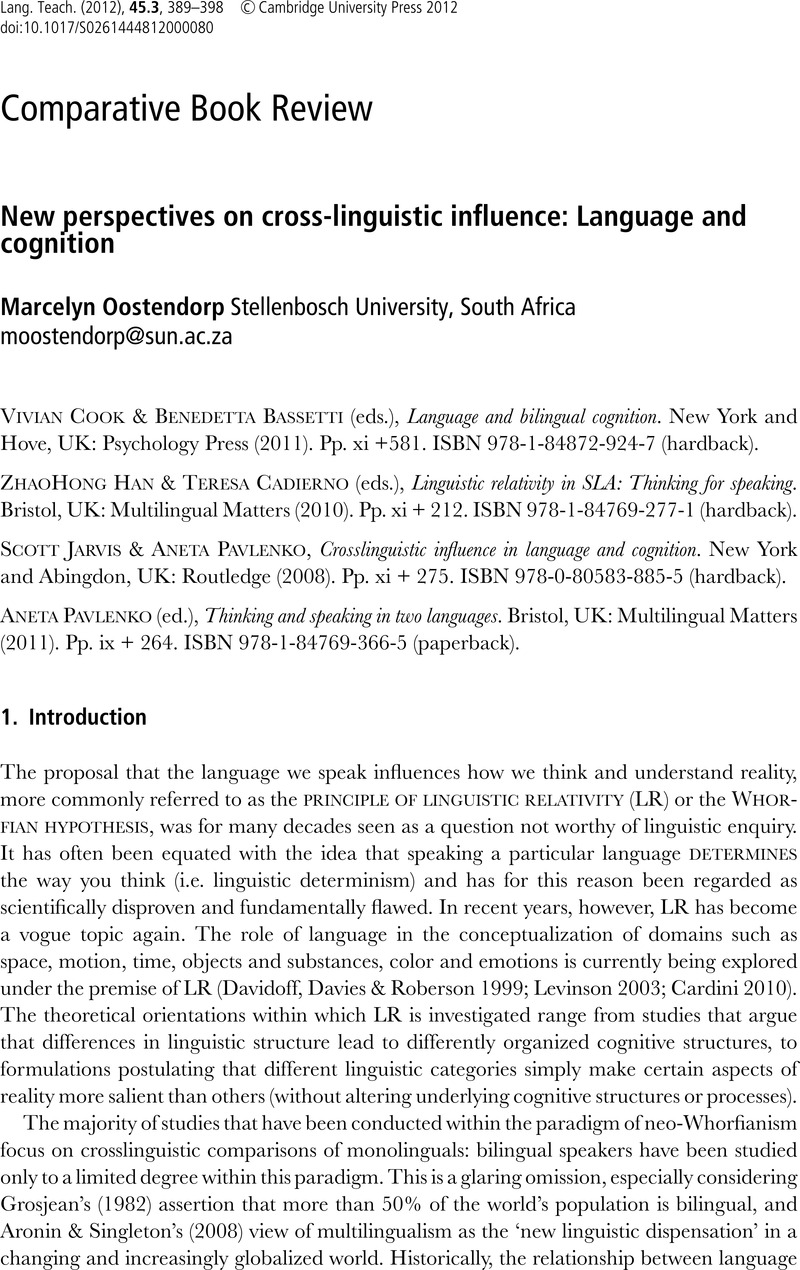Crossref Citations
This article has been cited by the following publications. This list is generated based on data provided by Crossref.
BYLUND, EMANUEL
and
ATHANASOPOULOS, PANOS
2014.
Language and thought in a multilingual context: The case of isiXhosa.
Bilingualism: Language and Cognition,
Vol. 17,
Issue. 2,
p.
431.
Bylund, Emanuel
and
Athanasopoulos, Panos
2015.
Introduction: Cognition, Motion Events, and SLA.
The Modern Language Journal,
Vol. 99,
Issue. S1,
p.
1.
Bylund, Emanuel
Khafif, Zainab
and
Berghoff, Robyn
2024.
Linguistic and Geographic Diversity in Research on Second Language Acquisition and Multilingualism: An Analysis of Selected Journals.
Applied Linguistics,
Vol. 45,
Issue. 2,
p.
308.
Oostendorp, Marcelyn
Little, Tanya
and
Berghoff, Robyn
2024.
First language primacy in multilingualism and emotion research: a view from Africa.
International Journal of Bilingual Education and Bilingualism,
Vol. 27,
Issue. 10,
p.
1360.



